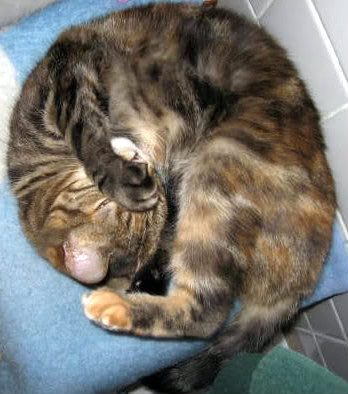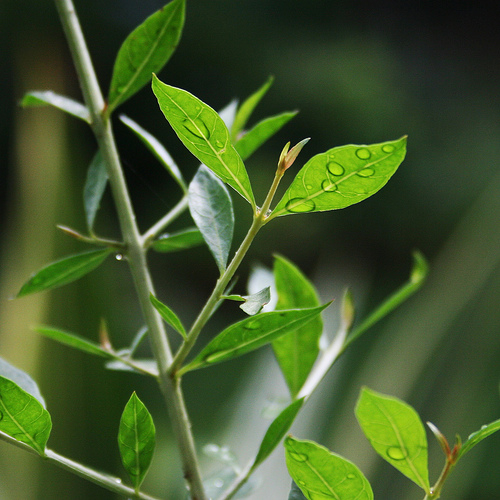
by Vanessa at Henna Sooq | Aug 28, 2012 | Caring For Your Hair: The Henna Way, DIY Ayurvedic Hair & Beauty Care Recipes, Henna and Jagua Body Art Tattoos, Henna for Hair, Learn How to Henna: Classes &Trainings, Strengthen Your Hair |
Have you ever prepared henna, let it sit out for dye release only to have a paste that doesn’t stain? As all henna powders have their own dye release timings, you’d think that all will go well– until the paste does not stain. There are a few variables involved that can skew the henna dye release times. Here’s a mini guide to testing your henna paste for readiness for both body art and hair use. All henna powders have a dye release time; some have shorter release times, while others require much more time to release. Dye release is the amount of time a henna powder needs, when mixed into a paste, to become ready to use, meaning the dye is ready and at the perfect height in color. It’s best to remember that dye release times are simply a guideline for the specific henna. Fresher henna powders typically can release much faster than older powders as well. As well as freshness, other variables that can speed up and slow henna’s dye release down such as the ambient air temperature, liquid temperature and use of acids in the mix. Heat can speed up henna’s dye release while acids and cold air/water have a habit of slowing the dye release down. There have been a few reports where hard water can slow down and even prevent henna from releasing. If you live in an area that has hard water, or have not been successful with dye release, try to mix your henna with an herbal tea made from distilled water which lacks the minerals that can interfere. Another option for hard water areas is to add 1-2 TBS of lemon...
Read more


by Vanessa at Henna Sooq | Aug 8, 2012 | Caring For Your Hair: The Henna Way |
We all have those funny henna stories, don’t we? Have you ever answered the door with your henna helmet on? Perhaps you’ve unintentioally re-modeled your bathroom with paste? Maybe you’ve even sneezed into your henna paste plastering it all over you? Or make a fashion statement by going out in your dashing henna helmet? Has a spouse mistaken henna paste for something tasty? A few years ago, I set about my normal henna routine. I placed my plastic covered henna paste on the radiator to release and had stepped away for a few minutes. Upon returning, the resident catnip-addicted cat named Rosie had pawed off the plastic covering and was licking the henna bowl and purring so loudly as if it were premium catnip itself!! Needless to say, the next time I prepared henna, I used a glass bowl with a tight fitting lid. Whenever henna day rolls around, one can find Rosie purring loudly close by. Rosie also likes to linger around my hair for a week after henna- she is entranced by it! Who licked the henna from the henna bowl? Rosie, 15, was not interested in being interviewed after the henna fiasco It doesn’t stop there! There was also that time where our miniature dachshund named Dashy had pulled the henna coated kitchen wrap out of the trash and ended up with a very orange tongue for a few days. He could have at least chosen a pretty design! 😉 Dashy, 5, obviously ashamed of his henna crimes, in hiding to avoid questioning Please share your funny henna story with us!...
Read more


by Vanessa at Henna Sooq | Aug 8, 2012 | Caring For Your Hair: The Henna Way, DIY Ayurvedic Hair & Beauty Care Recipes, Henna and Jagua Body Art Tattoos, Henna for Hair, Learn How to Henna: Classes &Trainings, Strengthen Your Hair |
Henna Sooq’s Red Raj is grown and harvested in Rajasthan and has become rather popular since its arrival at Henna Sooq. Red Raj is a finely ground , medium dusty green powder. Red Raj is very popular with those with curly/wavy hair and is gentle enough to use on fragile hair as well as dreadlocks due to it’s intense creaminess and ease of washing out. Those with greys/silver hair have reported that Red Raj stains them a beautiful dusky rosey/rose-copper tone (which eventually turns to a deep red) and not the orange seen with many other henna powders. Henna Sooq’s Red Raj with its 3.22% lawsone content has become one of our most popular hennas! Check out the buzz about Red Raj! “Great Henna to color grays. I mix mine with 2tbs of Amla to keep my curl pattern. It is not as finely sifted as Jamila, but it gives my grays that reddish burgundy color that I love. It also smells a lot better than Jamila.” “This is more of a rose red then the coppery color (at least on my greys) that I would get from the Jamila Summer Crop BAQ (which I love). Still love Jamila, but Red Raj is my go-to now. It’s definitely a different texture – a little stringy and moves almost as one big ball of henna cream after it absorbs the water when I mixed it, but it washed out easier and made less of a mess in the tub then the Jamila did.” “This henna is awesome in it’s color and conditioning properties! The red is intense and has given...
Read more


by Vanessa at Henna Sooq | Jul 11, 2012 | Caring For Your Hair: The Henna Way, DIY Ayurvedic Hair & Beauty Care Recipes, Henna for Hair, Strengthen Your Hair |
Welcome to part 3 of Before You Purchase: Beginners Guide to Henna. In part 2, we discussed how henna works, where henna can be purchased and why fresh henna is so important. Check out parts one and two of Before you purchase: Beginners Guide to Henna. How can I use henna? Henna is very easy to use and is not messier than using commercial boxed dyes. The best thing to do before trying any different product is to do strand tests with samples. At Henna Sooq, we have samples available so that you can try before making a commitment. Remember, henna is a commitment due to it’s permanency. To strand test, harvest some loose hairs from your brush. Prepare the samples and dye the strand. Strand testing is important as it gives you the opportunity to experiment with timing and mixes so that there are no surprises when you do your hair. For subtle results, leave henna on for an hour, and for more intense results, leave henna on for at least 4 hours- overnight. Start off with a simple mix of henna and warm (not boiling!) tap water until you know how henna works for you. Later on, you can introduce ingredients such as oils, butters , coconut milk, yogurt, herbs, juices, spices, essential oils, teas and other liquids to your henna paste. To dye the hair copper or ginger tones, henna must be diluted with Cassia, conditioner, flax gel or light green yogurt. Check out Basic Henna Recipes: From Light Copper To Red for dying light hair light copper to red, and Basic Henna Recipes: From Burgundy To Black for dying...
Read more











